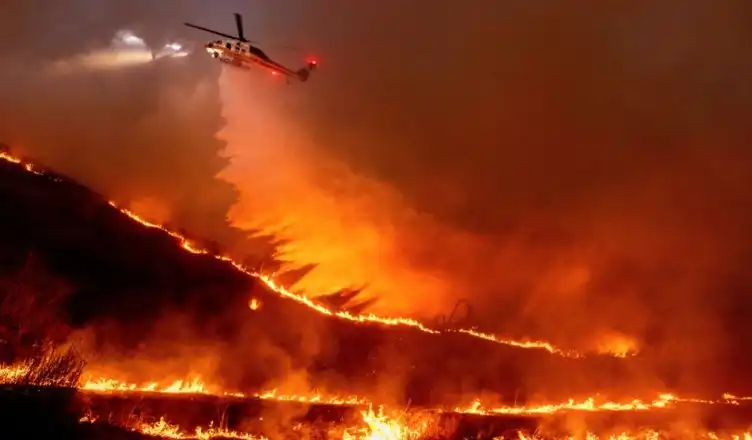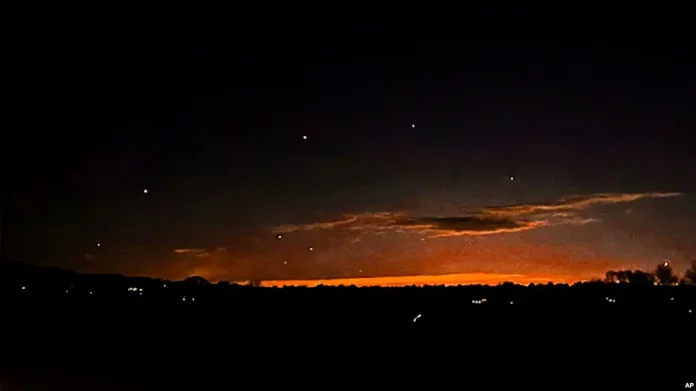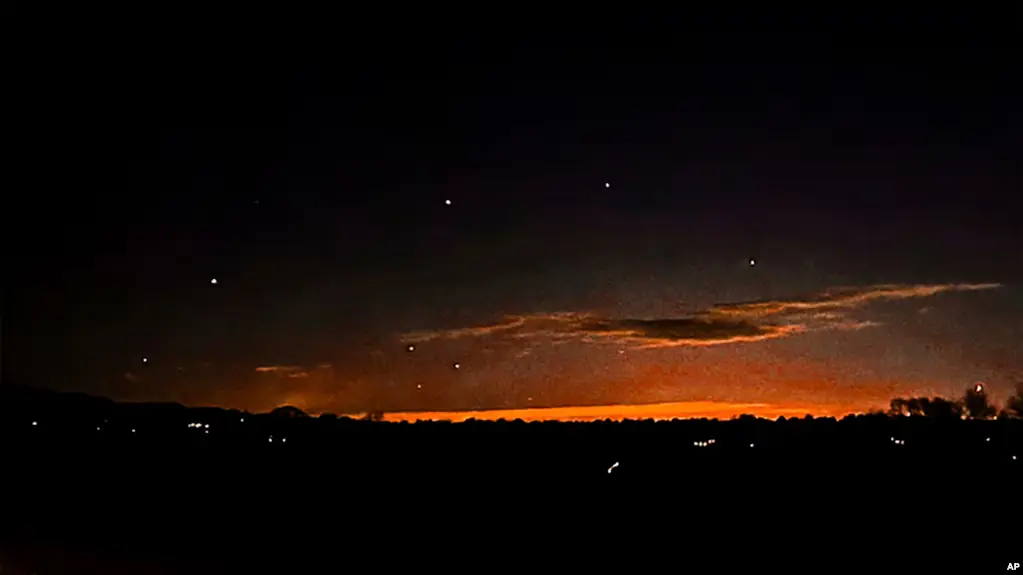California is no stranger to wildfires, but the devastation caused by the recent fire outbreak has shocked even the most experienced emergency responders.
As dozens of lives have been lost and hundreds of thousands of acres scorched, the scale and mystery surrounding these wildfires have raised alarming questions.
Unusual weather phenomena, alleged sightings of mysterious drones, and the challenge of responding to a natural disaster of this magnitude make the fires in Southern California a gripping tale of disaster and intrigue.

The Scale of Destruction
Stretching across hundreds of thousands of acres, the fires in Southern California have decimated entire neighborhoods, displaced thousands of residents, and left parts of the state in utter chaos.
To put the devastation into perspective, officials estimate that the size of the area burned is equivalent to several cities, including Los Angeles, or thousands of football fields. Homes, businesses, and critical infrastructure have been reduced to ashes, leaving communities struggling to rebuild.
Compounding the destruction is a prolonged drought that has left the state parched and highly susceptible to fire outbreaks. Strong winds—specifically the notorious Santa Ana winds—have further fueled the flames, creating conditions where the fires spread with terrifying speed. These hot, dry winds, traveling at speeds of over 60 mph, act as a natural accelerant, making firefighting efforts even more difficult.
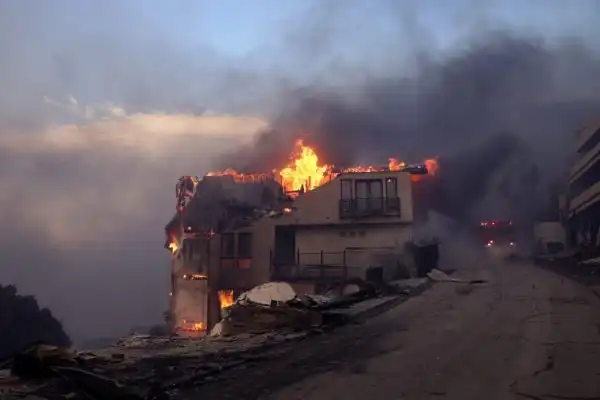
Santa Ana Winds: The Perfect Firestorm
The Santa Ana winds, a regular weather phenomenon in Southern California, are infamous for their role in wildfires. These winds originate in the Great Basin region, pushing hot and dry air from the mountains toward the coast.
As the air descends, it heats up further, drying out vegetation and creating the perfect conditions for fires to ignite and spread uncontrollably.
Firefighters have long recognized the danger posed by these seasonal winds, yet their intensity during this wildfire season has taken many by surprise.
Fire officials have described the current situation as a “perfect storm” of weather patterns, dry conditions, and fierce winds that have left them struggling to contain the flames.

Mysterious Drones: A New Layer to the Crisis
Amid the chaos of the wildfires, reports of mysterious drones flying over fire-stricken areas have added a bizarre and unsettling twist to the narrative. Eyewitnesses and emergency responders have reported spotting unidentified drones in the skies above the fires, leading to speculation about their origin and purpose. Similar sightings of mysterious drones in other areas, like those swarming over New Jersey, have also baffled experts, as detailed in our article on Mysterious Drones Swarm New Jersey.
According to The Express and The Mirror, these drones have been seen flying in precise patterns over active fire zones, prompting concerns about interference with firefighting operations. Some theorists believe these drones may be part of coordinated efforts to monitor or even exacerbate the fires, while others suggest they could be tools for disaster response or reconnaissance.
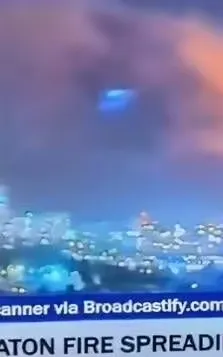
While officials have yet to confirm the role or origin of these drones, their presence has raised serious questions. Are they the work of individuals exploiting the disaster for unknown motives, or could they be part of a larger, organized operation? With no clear answers, the mystery of the drones only deepens the intrigue surrounding this wildfire season.
Challenges Facing Emergency Responders
The sheer scale of the wildfires has overwhelmed local firefighting resources. More than 7,500 firefighters from California and neighboring states are battling the blazes, with reinforcements arriving from across the country.
Advanced firefighting aircraft, including federal planes and helicopters, have been deployed, yet strong winds and limited water supplies have hampered their efforts.
Compounding the problem is the state’s dwindling water reserves, with some firefighters resorting to drawing water from residential pools and fountains to combat the flames. Residents have been urged to conserve water as emergency crews race against time to contain the fires.
Despite these challenges, federal authorities, including President Biden, have pledged full support to California, promising to cover the costs of firefighting efforts and deploy additional resources as needed. But for residents who have lost their homes or loved ones, the road to recovery will be long and difficult.
Economic and Environmental Fallout
The financial toll of the wildfires is staggering. Preliminary estimates suggest billions of dollars in damages, including losses to homes, businesses, and public infrastructure. Insurance claims are expected to skyrocket as residents begin to assess the destruction.
Beyond the economic cost, the environmental impact of the fires is severe. The smoke and ash released into the atmosphere have worsened air quality across the region, posing health risks to millions of residents. Wildlife habitats have also been decimated, with countless animals killed or displaced by the fires.
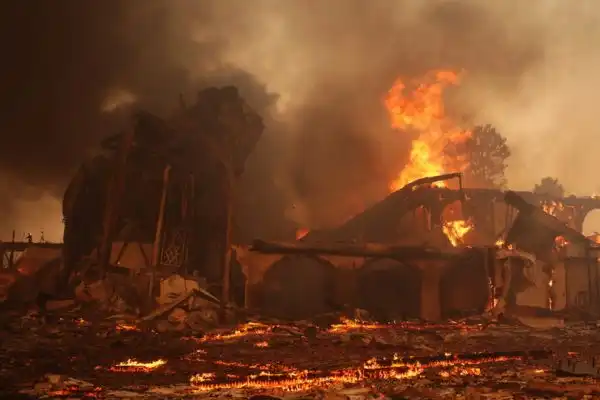
Who Is to Blame?
The causes of the fires remain under investigation, but experts point to a combination of human activity, climate change, and natural weather patterns as contributing factors. The prolonged drought, coupled with rising temperatures, has created an environment where wildfires are not only more frequent but also more destructive.
Critics, however, have also pointed to lapses in preparedness and response. Questions are being raised about whether local and state officials did enough to mitigate the risk of fires, particularly in areas prone to mega-fires. Allegations of delays in deploying aerial firefighting resources and insufficient water reserves have further fueled public frustration.
Frequently Asked Questions (FAQs)
1. What caused the California wildfires?
The California wildfires were fueled by a combination of factors, including prolonged drought, strong Santa Ana winds, and dry vegetation, creating the perfect conditions for rapid fire spread.
2. What are Santa Ana winds, and how do they affect wildfires?
Santa Ana winds are hot, dry winds originating from the mountains of Southern California. They intensify wildfires by spreading flames rapidly and drying out vegetation, turning it into highly flammable fuel.
3. Why are mysterious drones being spotted near the fire zones?
Eyewitnesses and responders have reported unidentified drones flying over fire-stricken areas. Their purpose remains unclear, sparking concerns about interference with firefighting operations and speculation about their origin.
4. How much damage have the California wildfires caused?
The fires have scorched hundreds of thousands of acres, destroyed countless homes and infrastructure, displaced thousands of residents, and caused billions of dollars in damages, with the final toll still being assessed.
5. What role does climate change play in California wildfires?
Climate change has intensified California’s wildfire seasons by increasing temperatures, reducing rainfall, and prolonging droughts, creating an environment that is more prone to large-scale fires.
6. Are firefighters getting enough support to combat the fires?
More than 7,500 firefighters and federal resources, including planes and helicopters, are battling the fires, but strong winds and limited water supplies have made their efforts extremely challenging.
7. What is the economic and environmental impact of the wildfires?
The fires have caused billions of dollars in economic losses and severe environmental damage, including air pollution, destruction of wildlife habitats, and the loss of natural resources.
Unanswered Questions
As Southern California grapples with the aftermath of this devastating wildfire season, many questions remain unanswered. What role, if any, did the mysterious drones play in the fires? Could more have been done to prevent or mitigate the disaster? And how will the state prepare for future fire seasons, which are expected to become even more severe due to climate change?
One thing is certain: the fires in California have once again highlighted the urgent need for stronger disaster preparedness, better resource management, and a deeper understanding of the complex factors driving wildfires in the region. Until these questions are addressed, the cycle of destruction is likely to continue, leaving communities vulnerable to future catastrophes.
Use of Our Content
⚠️ Content on “Mystery Uncover” is protected under US and International Copyright Laws.
You are free to reuse, republish, and share our content by giving credit to the source as Mystery Uncover with a link to the original material on mysteryuncover.com.


